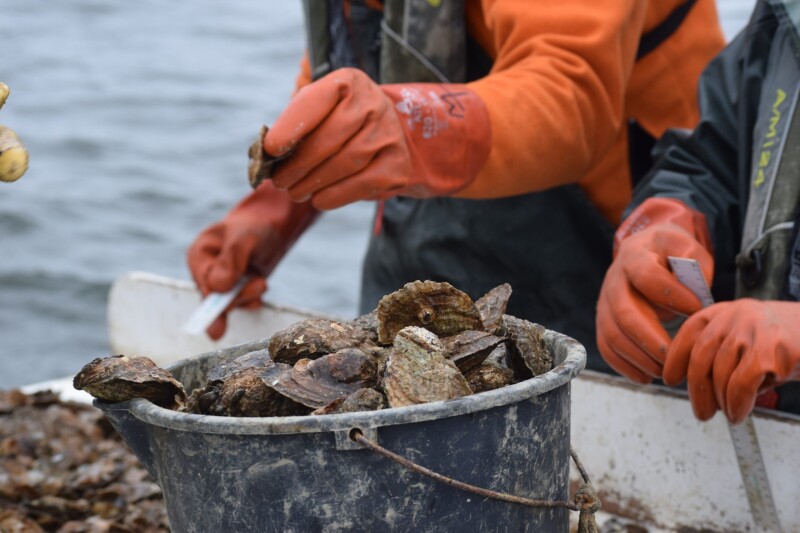Image

Maryland stock assessment finds 12 billion oysters in Chesapeake Bay

Photo by Joe Zimmermann, Maryland DNR
The latest benchmark stock assessment from the Maryland Department of Natural Resources (DNR) and the University of Maryland Center for Environmental Science (UMCES) estimates that more than 12 billion oysters now populate the state’s portion of Chesapeake Bay.
The findings, released on May 19, mark a significant increase in abundance since the last assessment in 2018, and a dramatic rebound from historic lows following widespread disease-related mortality in the early 2000s.
“Good news for oysters is good news for the Chesapeake Bay,” said DNR Secretary Josh Kurtz. “This stock assessment shows that oysters have made important progress during the past two decades. That’s a testament both to our continued investment in oyster restoration and our careful management of the oyster fishery.”
The assessment analyzed eastern oyster populations from 2005 to 2024, using data from harvest reports, sonar and dredge surveys, and peer-reviewed studies, among other sources. The results estimate 7.6 billion adult oysters and over 5 billion juveniles or spat in Maryland’s waters in 2024. By comparison, adult oyster abundance was only 2.4 billion in 2005.
According to Mike Wilberg, the lead researcher from UMCES, the growth stems from three primary factors: “The first one is that we have had some good spatsets. The second one is that natural mortality rates, or particularly disease, hasn’t been as bad as it was in the 1980s and 1990s. And then the last one is that the department had maintained restrictions on harvesting.”
The 2025 report is Maryland’s second major oyster stock assessment since the passage of the state’s Sustainable Oyster Population and Fishery Act of 2016, which requires a benchmark every six years. It also includes an independent peer review validating both the methodology and findings.
While the overall trajectory is positive, the picture varies by region. One area exceeded the state’s long-term abundance target, while 24 regions fell between the target and cautionary levels. Three regions were near the lower limit, and seven fell below it.
“The oyster population has been increasing across most of the Bay,” Wilberg noted. “There are only a few areas where we have had decreases over the last five years. That’s a good sign from my perspective.”
Still, he cautioned, “It may take decades or longer for the population to get back to those levels. This is where we want the population to get to, but we’re not there yet.”
On the management side, fishing pressure has declined across much of the Bay. The 2025 assessment found that 29 areas were below the target fishing mortality threshold, up from 13 in 2018. Just four regions were above the upper limit for fishing mortality this year.
“This indicates that the fishery is in a better condition than it was when we did our last benchmark in 2018,” said Wilberg. “A lot of credit for that goes to DNR for changing aspects of management in response to the last stock assessment.”
Restoration sanctuaries played a significant role in local success stories. Adult oyster populations rose from 100 million to 500 million in the Little Choptank River after restoration efforts began post-2010. Harries Creek saw a fivefold increase from 40 million to 200 million, and the Tred Avon River increased fourfold from 40 million to 175 million adults.
“The three major restoration sanctuaries that are pretty much finished have all been really strong successes,” said Wilberg.
While the report doesn’t quantify how much of the growth is directly due to restoration versus environmental factors, it does suggest sanctuaries are contributing meaningfully to regional recovery.
Oysters in the Chesapeake Bay were decimated by overharvesting, disease, and habitat loss through the 19th and 20th centuries. Between 1999 and 2022, disease-related mortality killed about 75 percent of the Bay’s oysters. However, from such low points, oysters have made significant progress.
Maryland DNR is expected to present proposed harvest rules for the upcoming oyster season at the June 9 Oyster Advisory Commission meeting.